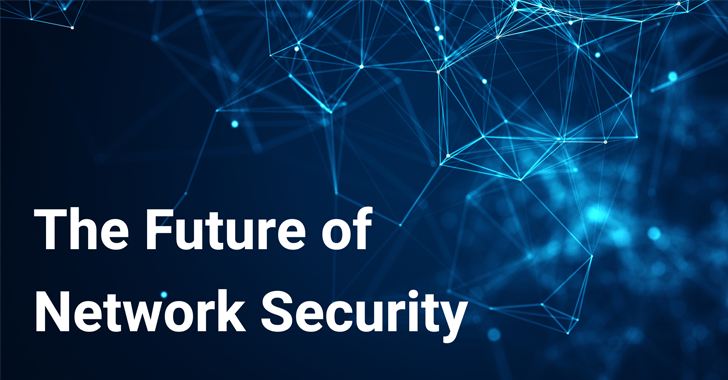Trends in Data Governance in 2023: Maturation Toward a Service Model

Organizations will increasingly adopt a Data Governance service model as they
increase implementations of AI technologies. The “EU and U.S. plan to impose new
regulations to protect consumers and impact how algorithms can ingest, use,
transform, and make recommendations based on datasets. Companies have a short
time to ramp up their Data Governance responses to AI because many algorithms
adjust inputs and outputs in real time. Organizations need more Data Governance
preparation, as only 30% of a McKinsey AI study respondents recognized potential
legal risks as relevant. The firms, blinded to the importance of AI regulations,
will face increased pressure to adapt their Data Governance approaches by the
end of 2023. EU’s draft AI regulations promise to impose more considerable fines
on companies who fail to comply, 6% of their global revenue, instead of the 4%
levied by the GDPR. Consequently, worker adoption of Data Governance updates, in
preparation for AI regulations, with their engagement and feedback, will play a
crucial role in 2023.
Sci-fi magazine halts new submissions after a surge in AI-written stories

Clarke acknowledged there are tools available for detecting plagiarized and
machine-written text, but noted they are prone to false negatives and positives.
OpenAI recently released a free classifier tool to detect AI-generated text, but
also noted it was "imperfect" and it was still not known whether it was actually
useful. The classifier correctly identifies 26% of AI-written text as "likely
AI-written" -- its true positive rate. It incorrectly identifies human-written
text as AI-written 9% of the time -- its false positive. Clarke outlines a
number of approaches that publishers could take besides implementing third-party
detection tools, which he thinks most short fiction markets can't currently
afford. Other techniques could include blocking submissions over a VPN or
blocking submissions from regions associated with a higher percentage of
fraudulent submissions. "It's not just going to go away on its own and I don't
have a solution. I'm tinkering with some, but this isn't a game of whack-a-mole
that anyone can "win." The best we can hope for is to bail enough water to stay
afloat," wrote Clarke.
Pairing AI with Tech Pros: A Roadmap to Successful Implementation

“The technology can also automatically check the quality and interpret data where metadata is not available, interpret tabular data and summarize them with natural text and jointly interpret image, text, and tabular data,” he says. Krishna cautions that while generative AI has exciting potential, the recent focus on the technology has also reinforced the importance of responsible AI. “Going forward, organizations will be using AI methodologies to make decisions for their customers, employees, vendors and everyone associated with them,” he says. “A responsibility charter needs to be sponsored by C-suite leaders and developed through dynamic and consistent discussions led by the leaders in compliance, risk and data analytics.” Lo Giudice adds it is important for organizational leaders and IT workers, for example software developers, to come together and decide which AI-based tools could be deployed and the strategy behind that deployment. “Developers are influencers of this, because if they get excited about it, it will win,” he says.
Platforming the Developer Experience
With intuitive, self-service workflows and all the tools developers need, they
rarely, if ever, have to think about ‘the how’ of getting their software into
the hands of users. And this works if and when an organization does at least a
couple of things right: The organization prioritizes the developer experience
and empowers other parts of the organization to answer the question, How can we
create the optimal developer experience? The organization puts resources behind
understanding and building the best developer experience–and that’s where both
the developer platform and DevOps teams as “fixers” ideas emerge. Does this mean
the “optimal experience” can’t be optimized? Does that mean developers cannot
have input into their own (or more general) developer experience(s)? No. In
fact, part of what makes the developer platform idea compelling is that
developers don’t have to weigh in or make decisions on the platform or tooling.
Still, it’s possible to let them have that freedom if the team or organization
wants to. Bottom line: There is no one-size-fits-all developer platform any more
than there is a single developer experience.
How IT professionals can change careers to cyber security

While most IT professionals will have these skills on a basic level, many will only understand them as needed for their own day to day work, Teale says. Therefore, additional training is sometimes necessary. Many IT professionals may not need to fork out for a cyber security degree although certifications might be a helpful way forward. Basic foundational books and courses can offer some guidance, and an apprenticeship or course from a certified body might make sense for IT professionals who are looking to switch early in their careers, Finch says. ... There are a number of entry level courses available, such as CISMP or CompTIA, says Freha Arshad, managing director, Accenture Security in the UK. “All of the major cloud service providers offer security courses for varied levels and skill sets. With enterprises increasingly focused on the cloud, this area is also a good place to start.” In addition, says McQuade, there are free resources online to support self-learning: “HackXpert and TryHackMe provide training labs, while Cybrary offers a library of helpful videos, labs and training exams. ...”
CISOs struggle with stress and limited resources
The lack of bandwidth and resources is not only impacting CISOs, but their teams
as well. ... Relentless stress levels are also affecting recruitment efforts
with 83% of CISOs admitting they have had to compromise on the staff they hire
to fill gaps left by employees who have quit their job. More than a third of the
CISOs surveyed said they are either actively looking for or considering a new
role. “The results from our mental health survey are devastating but it’s not
all doom and gloom. Our research found that CISOs know exactly what they need to
reduce stress levels: more automated tools to manage repetitive tasks, better
training, and the ability to outsource some work responsibilities,” said Eyal
Gruner, CEO, Cynet. “One of the most eye-opening insights from the report was
the fact that more than 50% of the CISOs we surveyed said consolidating multiple
security technologies on a single platform would decrease their work-related
stress levels,” Gruner added.
Making Risk Management for Agile Projects Effective

Agile claims to be risk-driven and based on its implicit practices—it lends
itself to an adaptive risk management style. For instance, the adaptability
of sprint planning is a response to uncertainty, “biting off a small chunk
at a time” to eventually deliver the finished solution. Due to its inherent
nature, Agile can mitigate some risk that occurs during the sprint cycle,
but this is not the only risk that may occur during a project’s lifespan.
For example, in larger enterprises, there is more risk related to the
external, organizational and project environments, including corporate
reputation, project financing, user adoption of business changes and
regulatory compliance. Management of this type of “project” risk is not
addressed in most Agile literature, which focuses on risk that may occur at
the sprint level. One recent proposal to address this limitation is to adopt
an Agile risk management process that includes tailoring Agile methodologies
to include project and enterprise risk management approaches in line with
the risk context for the project.
Robotic Process Automation: Confluence of Automation and AI

According to Deloitte, it can lead to improved service, fewer mistakes,
increased audibility, increased productivity, and lower costs. It makes it
possible to have a workforce that is automated in a variety of ways around
the clock. More sophisticated tools are taking the place of the outdated
methods that relied on Excel sheets and macros. Additionally, functions like
dashboarding, workflow, and proactive system and process monitoring are
becoming increasingly important components of technology infrastructures
thanks to these new tools. Additionally, these “new” tools frequently need
to interact with older systems, which is not possible alway. To extract,
format, shape, and distribute the data in a way that a downstream system can
consume, necessitates human interaction. This process is being automated
with RPA in a more controlled, efficient, and less labor-intensive manner.
RPA bots can, for the sake of simplicity, completely automate human actions
like opening files, entering data, and copy-pasting fields.
The Future of Network Security: Predictive Analytics and ML-Driven Solutions

ML-driven network security solutions in cybersecurity refer to the use of
self-learning algorithms and other predictive technologies (statistics, time
analysis, correlations etc.) to automate various aspects of threat
detection. The use of ML algorithms is becoming increasingly popular for
scalable technologies due to the limitations present in traditional
rule-based security solutions. This results in the processing of data
through advanced algorithms that can identify patterns, anomalies, and other
subtle indicators of malicious activity, including new and evolving threats
that may not have known bad indicators or existing signatures. Detecting
known threat indicators and blocking established attack patterns is still a
crucial part of overall cyber hygiene. However, traditional approaches using
threat feeds and static rules can become time-consuming when it comes to
maintaining and covering all the different log sources. In addition,
Indicators of Attack (IoA) or Indicators of Compromise (IoC) may not be
available at the time of an attack or are quickly outdated.
1 in 4 CISOs Wants to Say Sayonara to Security

CISOs aren't necessarily running down alerts constantly the way their
employees are, but they're overloaded with other career fatigue factors.
"CISOs are constantly trying to balance high expectations against an absence
of the tools needed to meet those expectations," Gartner analysts wrote in
the prediction piece. "Compliance-centric cybersecurity programs,
significantly low executive support, and subpar industry-level maturity are
all indicators of an organization that does not view security risk
management as critical to business success." One of the big factors that
could have CISOs reconsidering their career trajectory in cybersecurity
altogether is the fear about what will happen to their professional
reputation if their company gets breached, says Diana Kelley, a veteran
cybersecurity executive and co-founder and CSO of Cybrize, a cybersecurity
workforce planning platform. She says CISOs and CSOs worry about "having
their name dragged through the mud" after a breach, or even facing criminal
charges, which feels more possible in the fallout from the conviction of
Uber's Joe Sullivan last year.
Quote for the day:
"Leadership is a two-way street,
loyalty up and loyalty down." -- Grace Murray Hopper
No comments:
Post a Comment